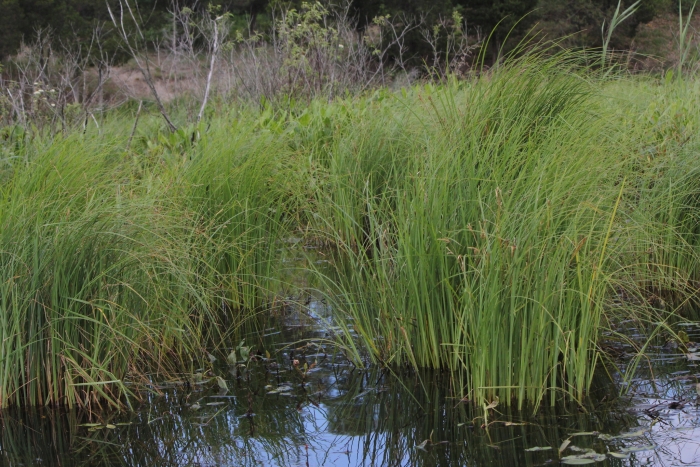Emory’s Sedge
(Carex emoryi)
Emory’s Sedge (Carex emoryi)
/
/

Quinten Wiegersma
CC BY 4.0
Image By:
Quinten Wiegersma
Recorded By:
Copyright:
CC BY 4.0
Copyright Notice:
Photo by: Quinten Wiegersma | License Type: CC BY 4.0 | License URL: http://creativecommons.org/licenses/by/4.0/ | Rights Holder: Quinten Wiegersma | Publisher: iNaturalist | Date Created: 2020-06-25T12:49:10-07:00 |




























Estimated Native Range
Summary
Carex emoryi, commonly known as Emory’s Sedge, is a semi-deciduous perennial grass native to riparian zones, wet meadows, and marshy areas across the United States and parts of Mexico. It typically grows to a height of 2-3 feet (0.6-0.9 meters) and a width of 4-6 feet (1.2-1.8 meters). This sedge forms dense clumps of narrow, arching leaves, which are green during the growing season and may turn brown in the fall, giving it a semi-deciduous nature. Emory’s Sedge is not particularly known for its flowers, which are small and brownish, but rather for its foliage and growth habit.
Emory’s Sedge is valued for its ability to stabilize soil and its adaptability to wet conditions, making it an excellent choice for rain gardens, bioswales, and water features. It is also used in naturalized plantings and as a ground cover in moist areas. In cultivation, it thrives in part shade to full sun and prefers consistently moist to wet soils. While it tolerates a range of soil types, it does best in soils with wet drainage. Emory’s Sedge can spread aggressively by underground rhizomes, which should be considered when planting in smaller areas or near garden borders.CC BY-SA 4.0
Emory’s Sedge is valued for its ability to stabilize soil and its adaptability to wet conditions, making it an excellent choice for rain gardens, bioswales, and water features. It is also used in naturalized plantings and as a ground cover in moist areas. In cultivation, it thrives in part shade to full sun and prefers consistently moist to wet soils. While it tolerates a range of soil types, it does best in soils with wet drainage. Emory’s Sedge can spread aggressively by underground rhizomes, which should be considered when planting in smaller areas or near garden borders.CC BY-SA 4.0
Plant Description
- Plant Type: Grass
- Height: 2-3 feet
- Width: 4-6 feet
- Growth Rate: Moderate
- Flower Color: N/A
- Flowering Season: Spring
- Leaf Retention: Semi-Deciduous
Growth Requirements
- Sun: Part Shade, Full Sun
- Water: High
- Drainage: Wet
Common Uses
Bird Garden, Butterfly Garden, Deer Resistant, Low Maintenance, Water Garden
Natural Habitat
native to riparian zones, wet meadows, and marshy areas across the United States and parts of Mexico
Other Names
Common Names: Riverbank Tussock Sedge, Riverbank Sedge, Carex D’Emory
Scientific Names: , Carex emoryi, Carex aquatilis var. altior, Carex aquatilis subsp. altior, Carex stricta var. elongata, Carex variabilis var. elatior, Carex stricta var. emoryi, Carex millegrana, Carex stricta f. emoryi, Carex variabilis var. altior
GBIF Accepted Name: Carex emoryi Dewey